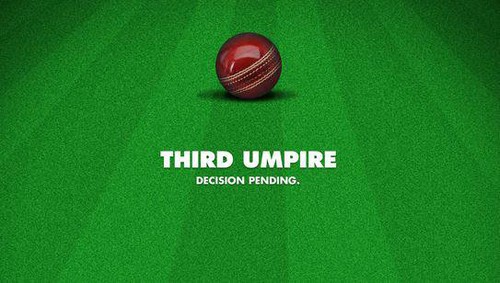Two bizarre decisions by third Umpires in recent days calls into question the referral system adopted by the ICC for decisions in which the Umpires or the players can refer the decision to the third Umpire. The Umpire them makes of high tech equipment made available to him and supposedly come to the correct decision. Of the two decisions that I am referring to, the first is the decision given in the T20 match between South Africa and Pakistan and the second is in today’s T20 match between New Zealand and India.

In the first case, the Pakistani batsman Shoaib Malik played the ball towards Andile on the leg side of the wicket and called his partner for a run. The non-striker, after starting for the run saw the ball in Andile’s hand and decided to regain his crease from halfway down the pitch. By this time Shoaib Malik was also halfway down the pitch and was stranded. Andile threw the ball to the wicketkeeper who gathered the ball and broke the stumps. One of the players was certainly run out. But the Umpire was uncertain about which batsman should go back to the pavilion as both the players were in the middle of the pitch when Quinton De Kock broke the stumps. The Umpire referred the decision to the third Umpire. The third Umpire took a long time to come to a decision as to which player should be given out. From the look on Shoaib face it was clear that he was the player who was out. Finally, the third umpire gave Shoaib Malik out.
The second incident was today in the sixth over of New Zealand's inning. Krunal Pandya was bowling to Daryl Mitchel and appealed for an lbw decision and the on-field Umpire gave him out. The batsman approached the non-striker suggesting to him that the ball had hit his bat before his pads and the two of them called for a review of the decision. In the replay, it was clear that the ball had deviated off the bat. In the hot-spot too, there was a spot on the ball after the ball had passed it suggesting that the ball had indeed hit the bat. Yet the third umpire gave Mitchell out and the poor batsman had to return to the pavilion.
Harsha Bhosale , tweeted that third umpire gave preference to Sneakometer more than Hotspot becasue in Sneakometer their is both audio and visual evidences have been captured.
Harsh Bogle, the TV commentator later tweeted that the third Umpire must have relied more on the sneak-o-meter which records both the contact with the ball and the sound. Whatever it was the decision affected New Zealand in a match that they lost. Does the use of modern technology make the job of the umpires easier or does it make it harder?
Comments